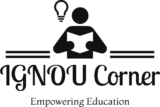Discrimination is the unfair or unequal treatment of individuals or groups based on characteristics such as caste, gender, religion, ethnicity, race, disability, sexual orientation, or social class. It occurs when people are denied equal rights, opportunities, or respect simply because of their identity or background. Discrimination can be direct, such as refusing someone a job because of their caste, or indirect, where certain rules or systems disadvantage a particular group even if they seem neutral on the surface. In both cases, discrimination leads to exclusion, inequality, and marginalization in society.
Discrimination exists in many forms and settings, including education, employment, housing, healthcare, politics, and everyday social interactions. It can be institutional, where organizations have policies or practices that disadvantage certain groups, or social, where community attitudes and behavior reinforce exclusion. Discrimination often results in denial of dignity, lack of economic opportunity, poor access to services, and psychological harm. Over time, it deepens social divisions and weakens the fabric of a just and democratic society.
In the Indian context, discrimination has deep historical roots, especially due to the caste system. Dalits, also known as Scheduled Castes, have traditionally faced severe discrimination in all areas of life. Despite constitutional safeguards and affirmative action, many Dalits continue to experience exclusion in schools, workplaces, public services, and social spaces. Discrimination also exists against Scheduled Tribes, who often live in remote areas with limited access to education, healthcare, and jobs. Their cultural practices and ways of life are often not respected by mainstream society.
Women are another major group facing discrimination. Gender-based discrimination is widespread and affects women in education, employment, property rights, and decision-making roles. Women are often paid less than men for the same work, and are underrepresented in politics and leadership. They also face violence and harassment in both public and private spaces. Discrimination against women intersects with other identities, such as caste and religion, to create multiple layers of inequality for Dalit or Muslim women, for instance.
Religious minorities, such as Muslims, Christians, and Sikhs, also face discrimination in various forms. This can include bias in hiring, unequal access to housing, and social exclusion. Hate crimes and communal violence further reinforce fear and mistrust. In some regions, religious minorities face restrictions on practicing their faith or accessing public resources. Such discrimination undermines secularism and violates the constitutional promise of equality for all religions.
Persons with disabilities face discrimination in both visible and invisible ways. Physical barriers in buildings and transportation systems prevent their mobility. They are often denied opportunities for education and employment due to stereotypes about their abilities. Lack of inclusive infrastructure, assistive devices, and support services adds to their exclusion. Discrimination against people with mental health conditions is even more severe, often resulting in social isolation and lack of treatment.
LGBTQ+ individuals are another group that faces widespread discrimination. They may be bullied in schools, harassed at workplaces, denied housing, and excluded from family and community life. Although legal progress has been made in some areas, such as the decriminalization of homosexuality in India, social acceptance remains low, and discrimination continues in both rural and urban areas.
Migrants and urban poor also experience discrimination, especially in access to public services, housing, and jobs. Migrant workers are often seen as outsiders and may be denied basic rights and benefits. They live in poor conditions and work in informal sectors without protection or recognition. Language, dress, and cultural differences further isolate them in urban settings.
Addressing discrimination requires a combination of legal, social, and educational efforts. Laws against discrimination must be strictly enforced, and institutions must be made more inclusive and accountable. Awareness campaigns and education programs should promote respect for diversity and human rights. Empowering marginalized groups through affirmative action, representation, and economic opportunities is essential for building a fair society. Community engagement and dialogue can help break stereotypes and foster understanding.
In conclusion, discrimination is a serious barrier to equality, justice, and development. It affects many groups in different ways and leads to long-term disadvantages. By recognizing and addressing discrimination in all its forms, we can move towards a more inclusive and humane society where everyone has the opportunity to live with dignity and respect.
